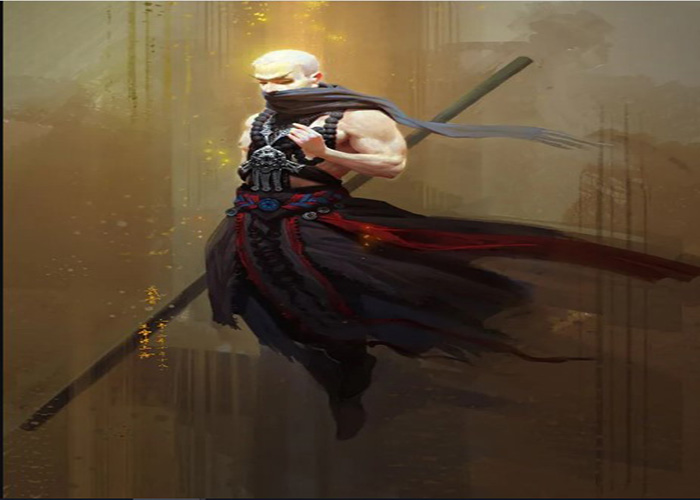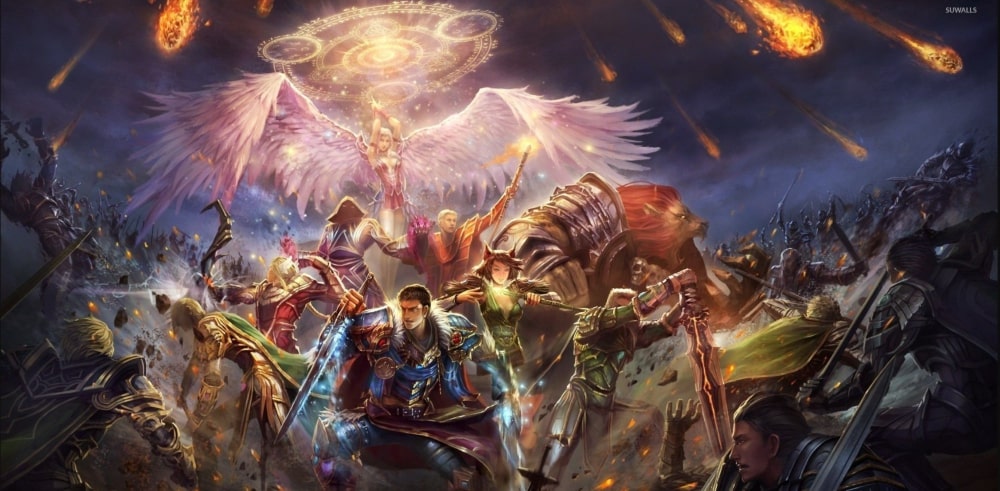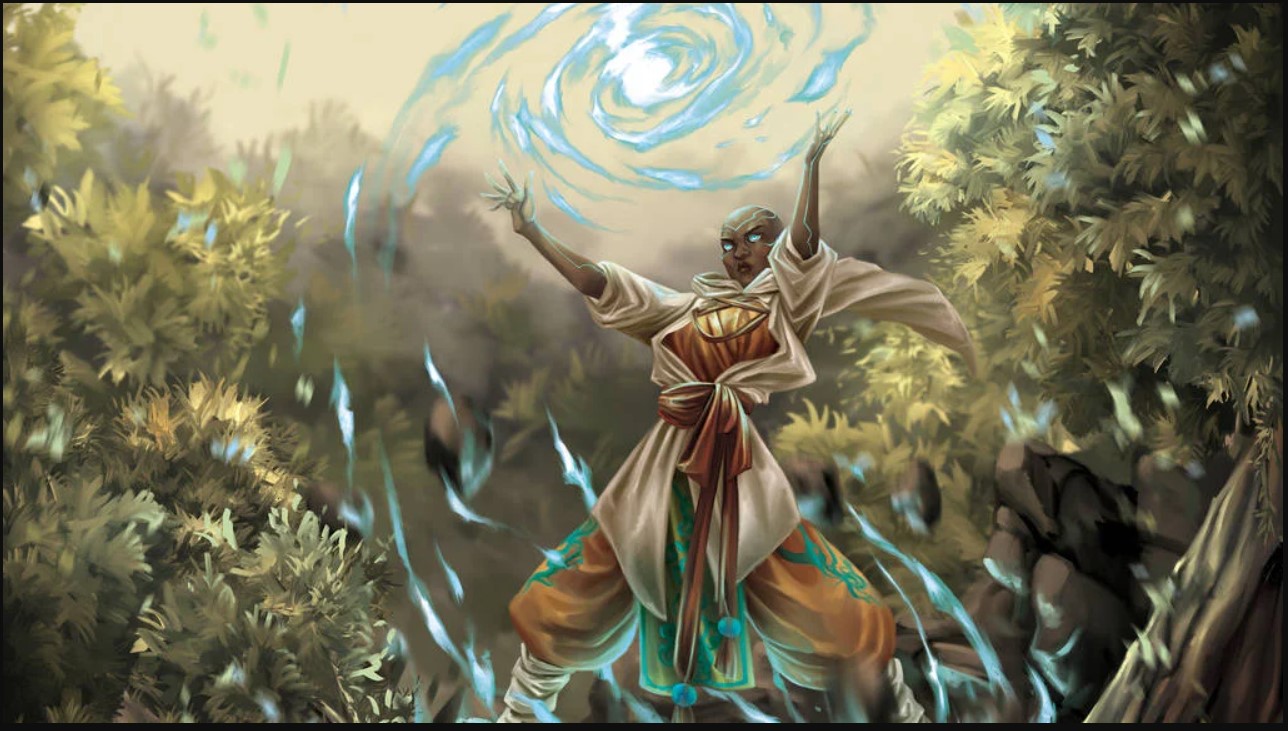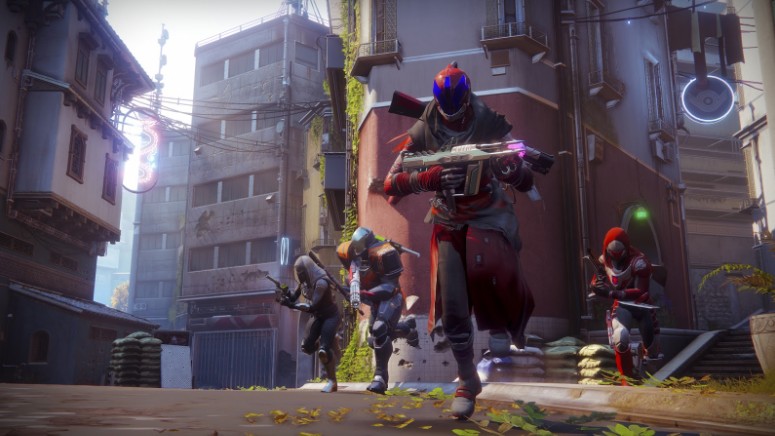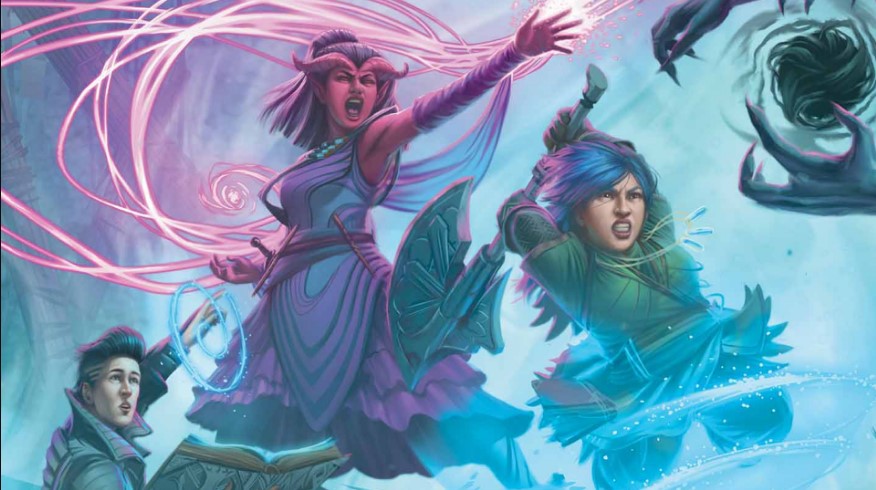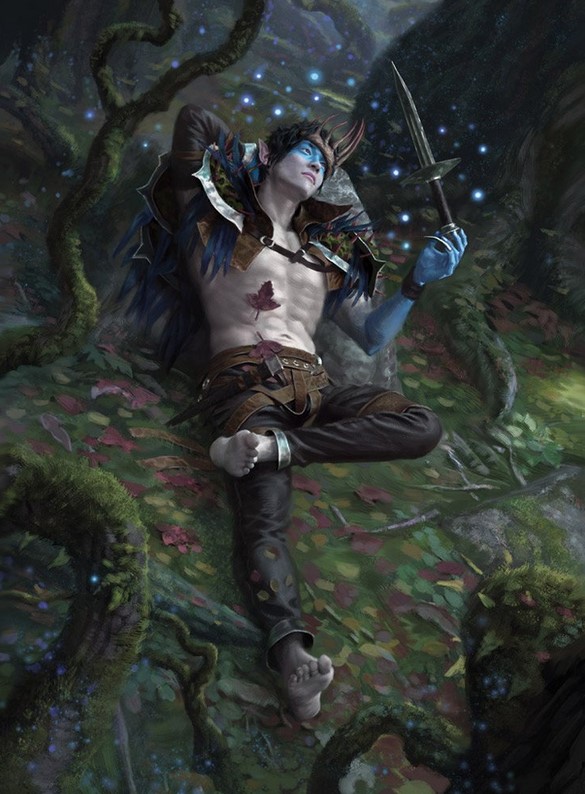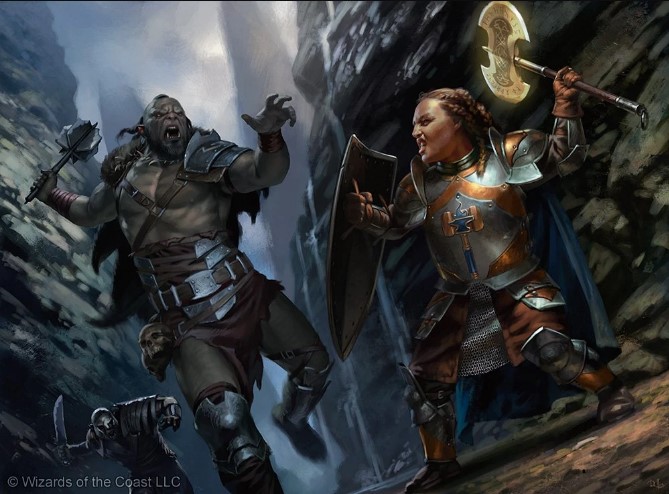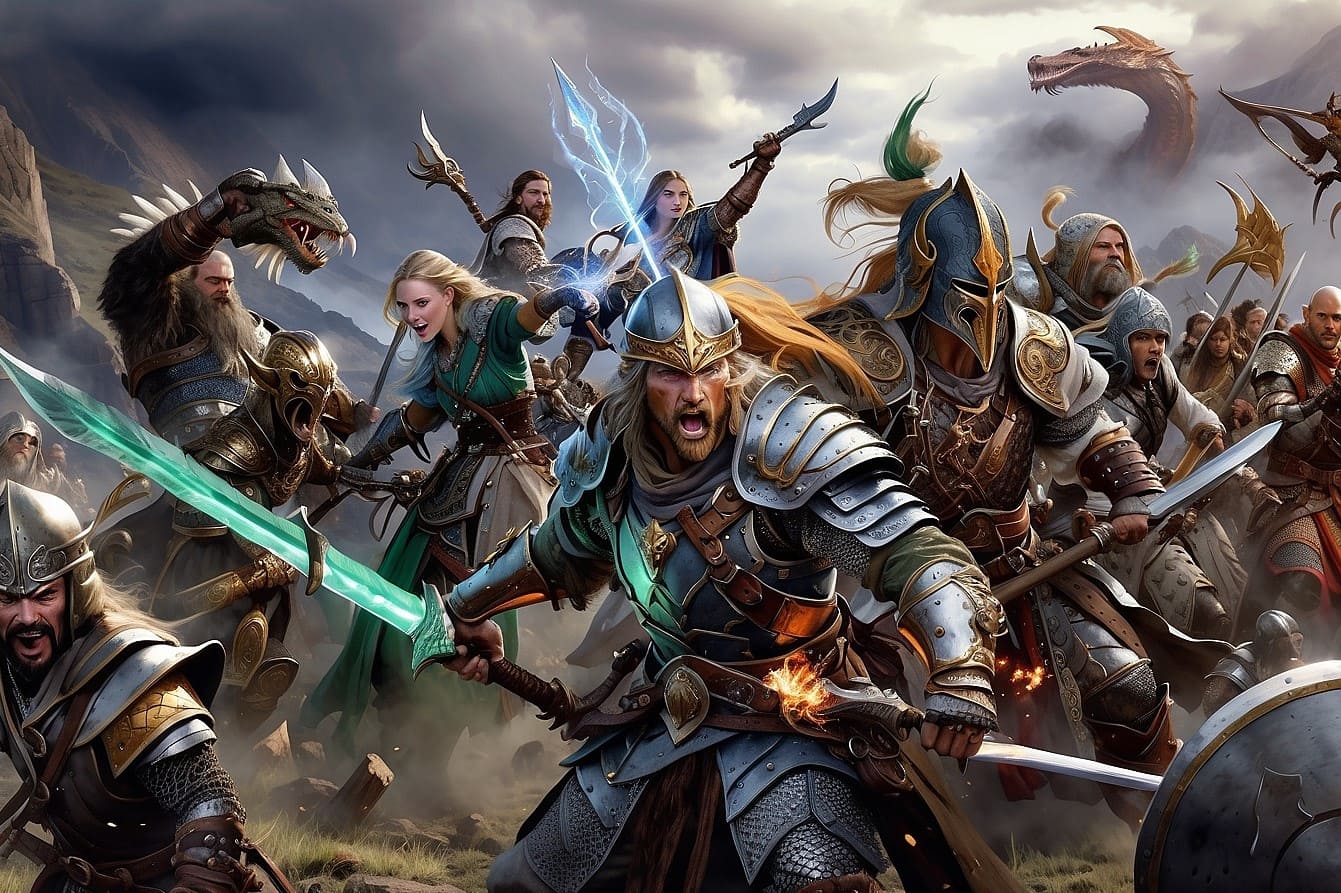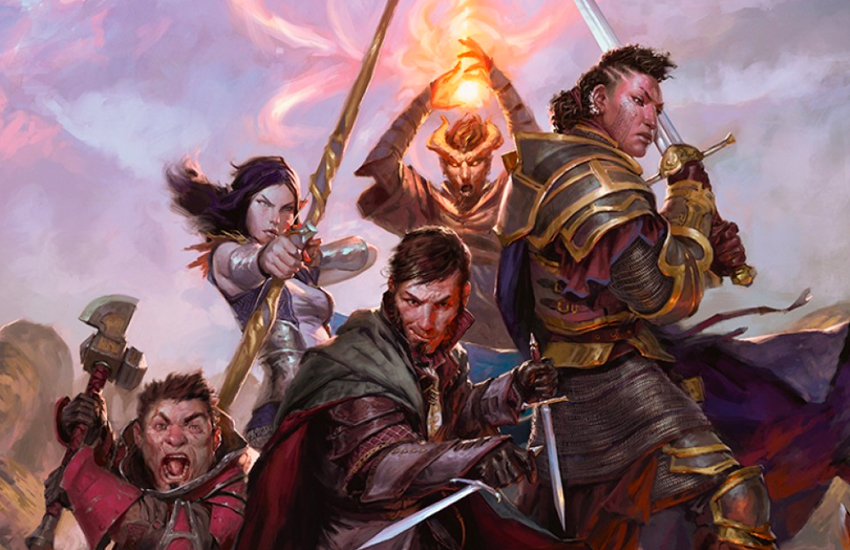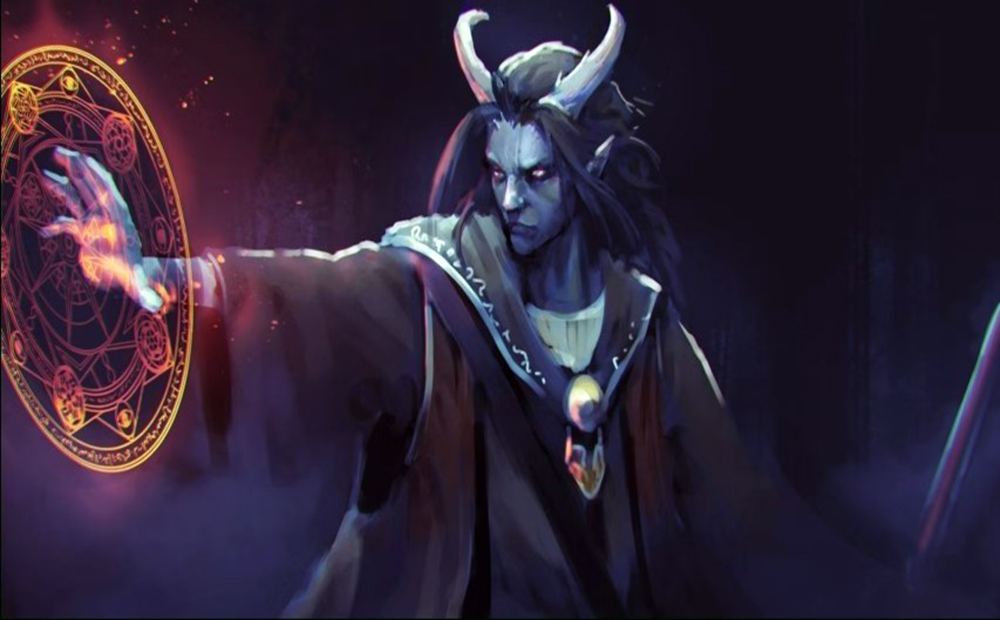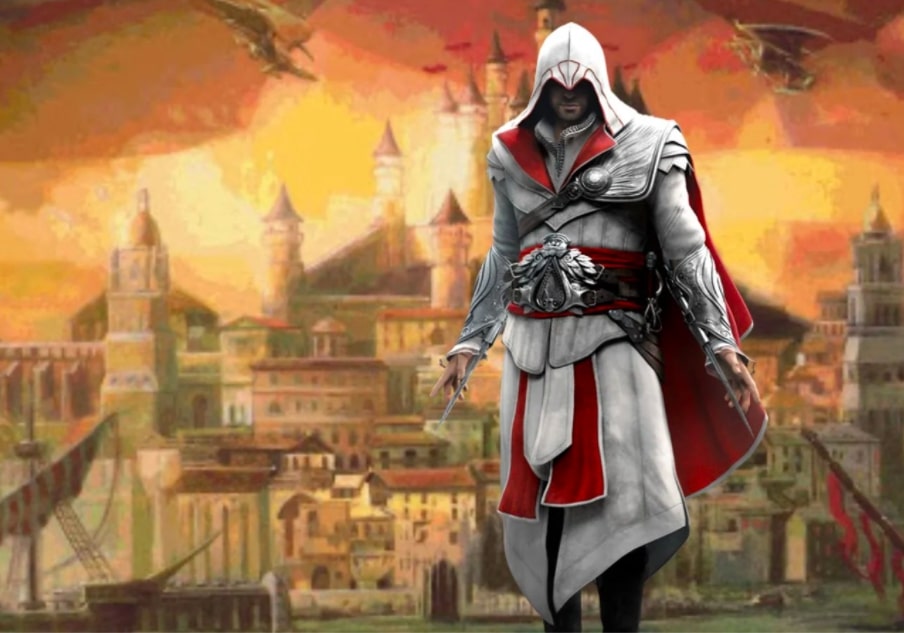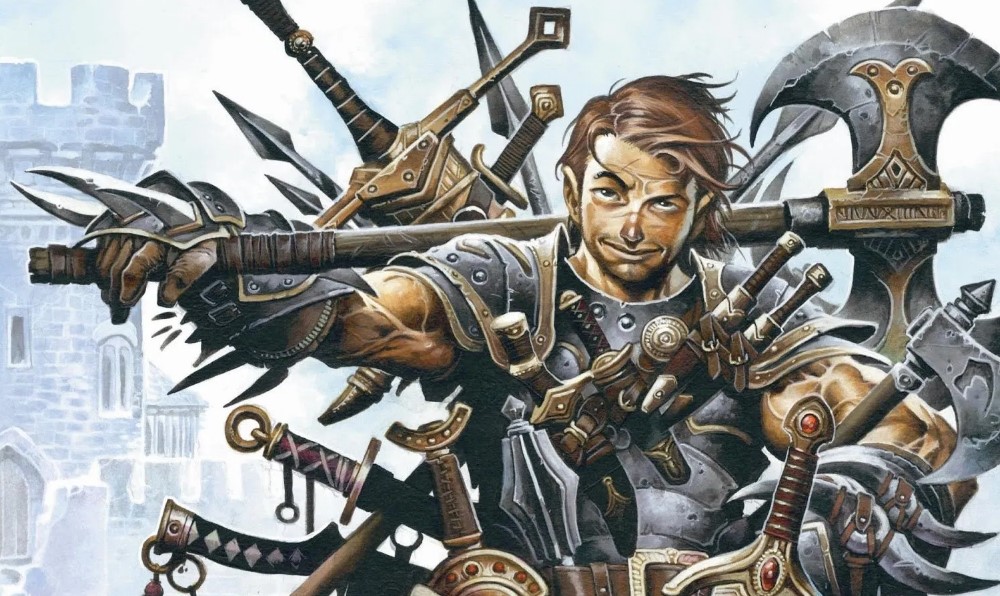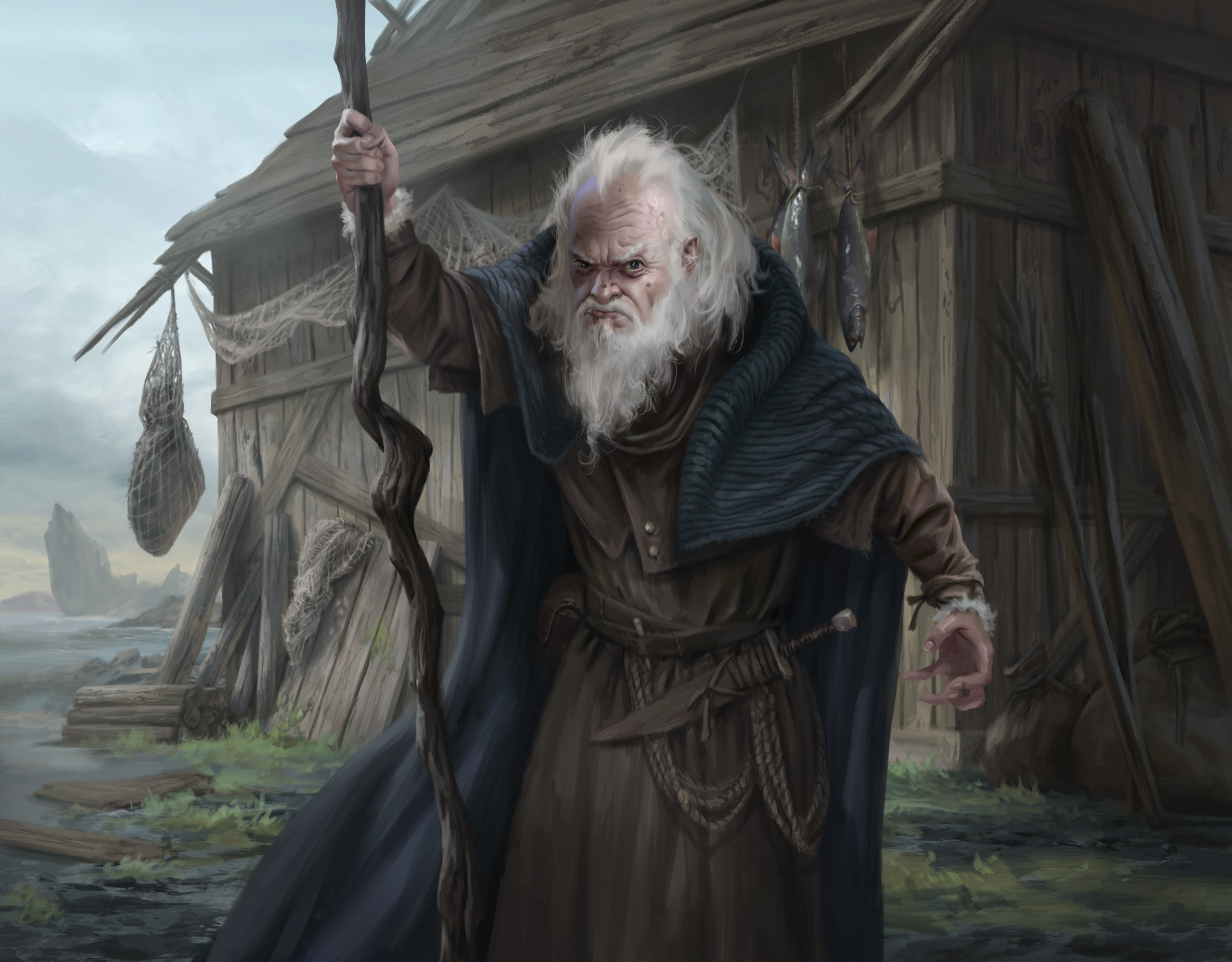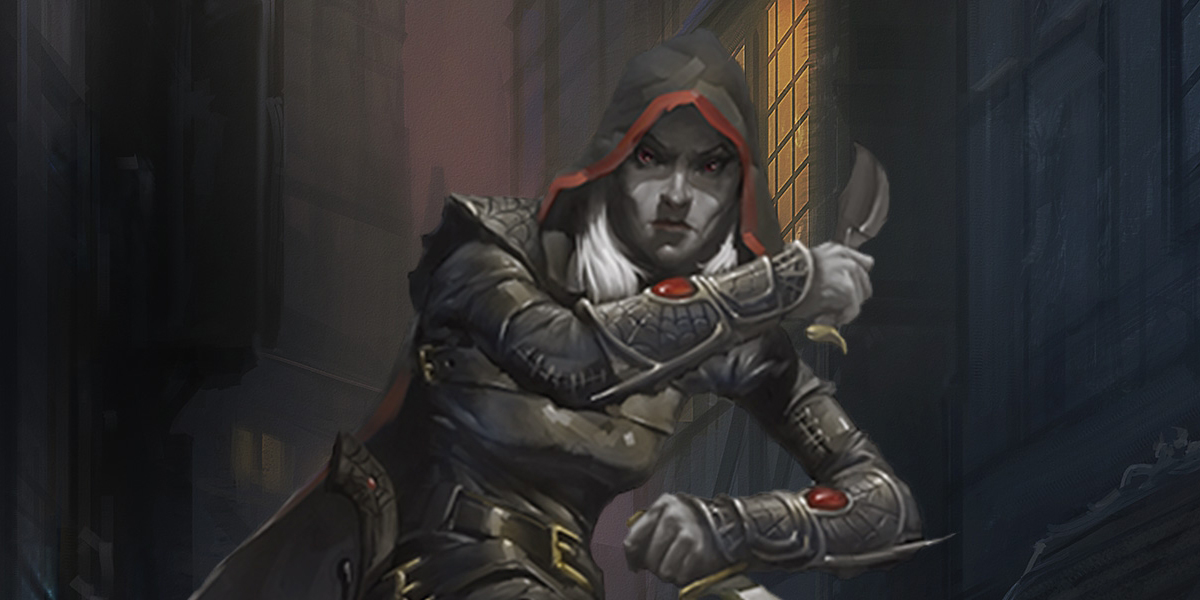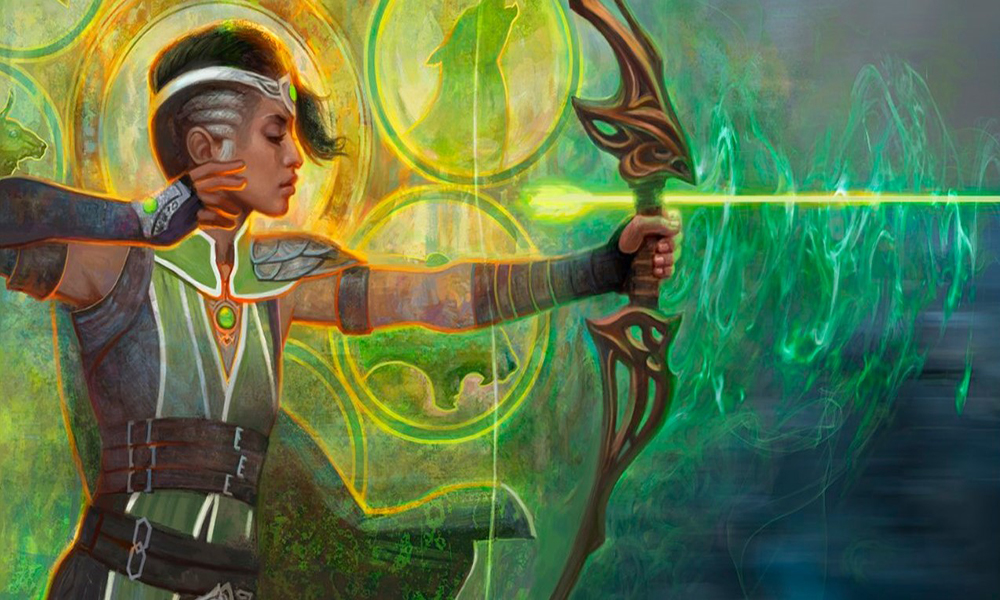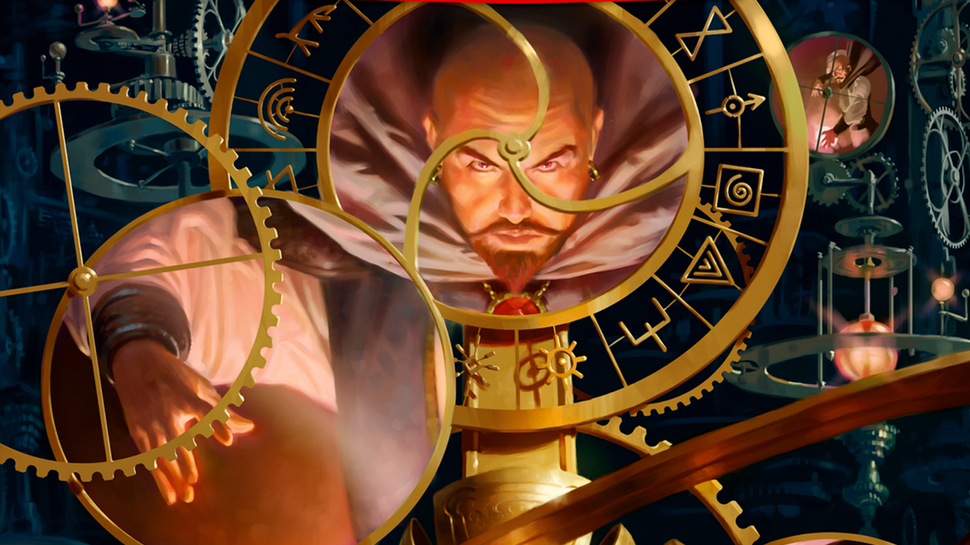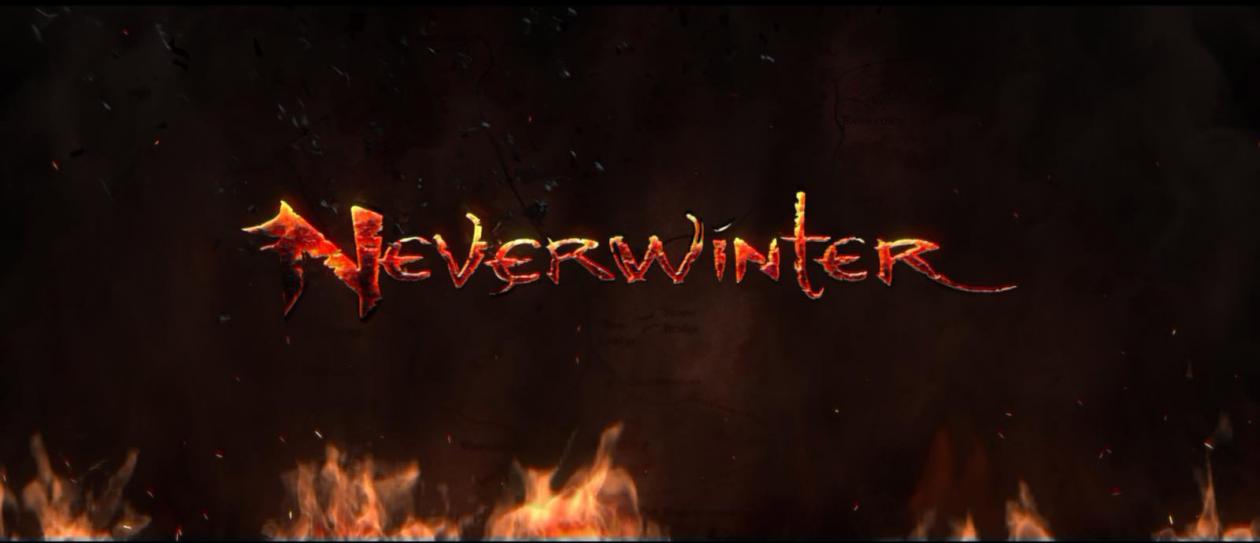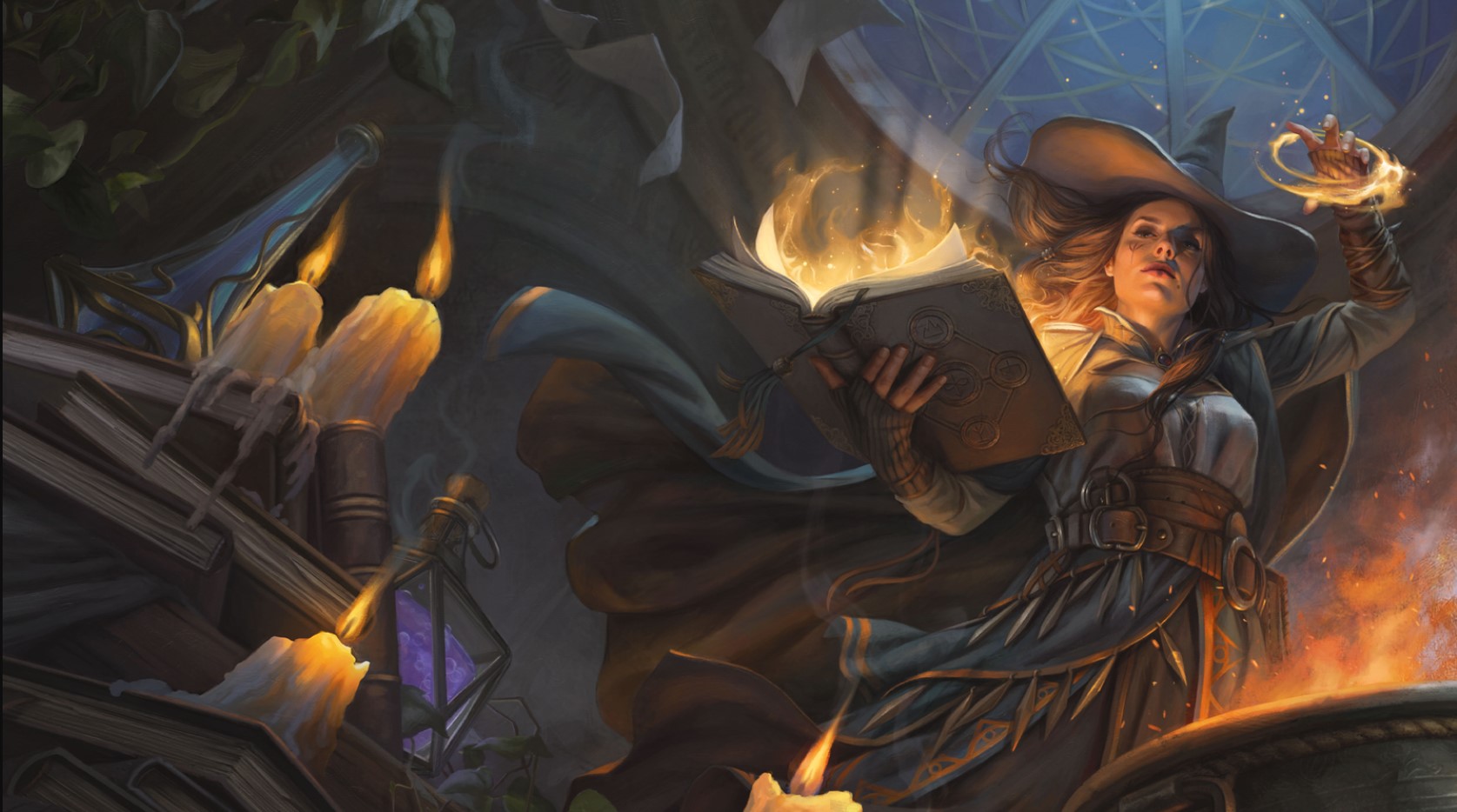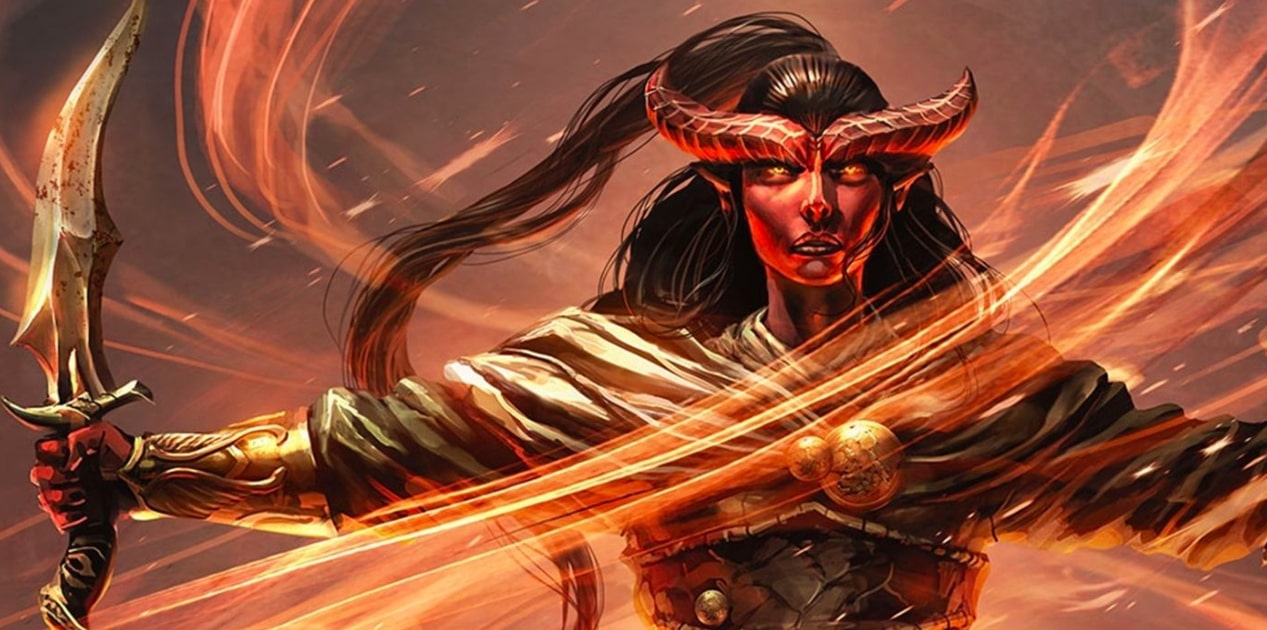![[Top 5] D&D Best Archer Builds That Are Powerful D&D Best Archer Builds](/sites/default/files/styles/responsive_image_600xauto/public/2024-04/top-5-dd-best-archer-builds-that-are-powerful-archer1.jpg.webp?itok=8hObs8iB)
Whether they’re stealthily firing arrows from the shadows or loosing tremendous volleys to control an entire battlefield, archers are one of the most popular archetypes in fantasy media. D&D lets players take that one step further, giving them all the tools they need to truly become a master of ranged combat.
Why Is an Archer Build Powerful?
Archers allow players to remain at a distance from their targets, always avoiding the warrior’s deadly axe and dodging even the most well-placed fireball. Stealthy archers can remain completely undetected, granting them advantage on their attacks and cover from enemies. This gives them high damage potential and great survivability.
What Are the Advantages of Playing an Archer?
One of the biggest benefits of an archer build is its maneuverability. Stealthy archers can run from cover to cover, staying hidden from prying eyes while launching arrows from every direction to surprise their foes. This allows them to take full advantage of the battlefield while staying protected from most attacks.
Archers are also very versatile characters. Some archer builds give you access to spellcasting, while other builds dip into the Rogue class, giving you more skill proficiencies and even expertise.
Below, we outline some of the most powerful archer builds as well as the best level progression to ensure that players reach the most important levels in their build as fast as possible. For most of these builds, we recommend taking the Sharpshooter feat at some point. This means either choosing the Variant Human race or sacrificing an Ability Score Improvement for it.
5. Fighter / College of Swords Bard

Sing a merry tune and you skip to and fro around the battlefield.
Want some versatility with your archer build? The Swords Bard with a splash of Fighter is the way to go. This build will have you dancing around the battle, dishing out Bardic Inspiration while raining down arrows with infinite ammunition and more attacks than most builds in the game.
With so many levels in bard, you get access to one of the most powerful spell lists in the game, as well as Magical Secrets, which will let you pick up the Swift Quiver spell. This spell will give you four attacks per turn long before the fighter or any other class can match. A single level of fighter gets you proficiency with the longbow, your weapon of choice, as well as the archery fighting style and second wind.
You will also have a lot of proficiencies and expertise. This class doesn’t benefit much from Charisma other than for the multiclass, so feel free to use your expertise on skills like stealth and perception which archers use frequently.
While powerful, this archer build is also very fun to play. Its emphasis on Dexterity and expertise in stealth make it a great sneaky archer, while still allowing you to jump in the fray if the situation calls for it. The Bard’s spellcasting gives you lots of options both in and out of combat, and Swift Quiver makes you an exceptionally powerful fighter.
So to sum-up, why is Fighter / Swords Bard so good?
- Extremely versatile spellcasting
- Excellent stealth archer
- Lots of high-damage attacks
- Good support capabilities in a pinch
Build details:
For starters, take 1 level of Bard. This will get you all the proficiencies you need for your first level. Next, take a level of Fighter for martial weapon proficiency and the archery fighting style. The rest of the build will be straight Bard, taking the College of Swords subclass at level 3 and the Swift Quiver spell with your 10th level Magical Secrets.
Race does not matter too much for this, just use Tasha’s optional features to ensure you have high enough ability scores.
Your ability score spread should look like this if you use Point Buy:
STR: 8
DEX: 16
CON: 16
INT: 8
WIS: 12
CHA: 14
For this build, your go-to weapon is the longbow and you will wear light armor, preferably studded leather as soon as you can get your hands on it.
Fighter 1 / Bard (Swords) 20
Fighter Levels:
Level 2 (Fighter 1) - Class Features: Second Wind (Heal a small amount of HP as a bonus action); Fighting Style (Choose archery)
Bard (Swords) Levels:
Level 1 (Bard 1) - Class Features: Spellcasting; Bardic Inspiration (d6)
Level 3 (Bard 2) - Class Features: Jack of All Trades (Gain half-proficiency in all skills you do not already have proficiency in); Song of Rest (Heal your allies by an additional 1d6 when they take a Short Rest)
Level 4 (Bard 3) - Class Features: Bard College (Choose College of Swords); Expertise (Choose 2 skills to gain double proficiency. I recommend Stealth and Perception). College of Swords Features: Bonus Proficiencies (Gain proficiency in Medium Armor and Scimitars. You can also use weapons as a Spellcasting Focus); Fighting Style (Choose a fighting style to gain benefits in combat. This choice does not matter); Blade Flourish (Gain new ways to use your Bardic Inspiration, granting certain benefits in combat)
Level 5 (Bard 4) - Ability Score Improvement (Increase Dexterity by 2)
Level 6 (Bard 5) - Class Features: Bardic Inspiration (d8); Font of Inspiration (Regain Bardic Inspiration on a short or long rest)
Level 7 (Bard 6) - Class Features: Countercharm (Use an action to give creatures within 30 feet advantage on saving throws against being charmed or frightened). College of Swords Features: Extra Attack (Attack twice instead of once when you take the attack action)
Level 8 (Bard 7) - Nothing
Level 9 (Bard 8) - Class Features: Ability Score Improvement (Increase Dexterity by 2)
Level 10 (Bard 9) - Class Features: Song of Rest (d8)
Level 11 (Bard 10) - Class Features: Bardic Inspiration (d10); Expertise (choices do not matter much); Magical Secrets (Learn 2 spells from any spell list of a level you have spell slots for. Choose Swift Quiver for one)
Level 12 (Bard 11) - Nothing
Level 13 (Bard 12) - Ability Score Improvement (Increase Constitution by 2 or choose a feat)
Level 14 (Bard 13) - Class Features: Song of Rest (d10)
Level 15 (Bard 14) - Class Features: Magical Secrets. College of Swords Features: Master’s Flourish (roll 1d6 instead of spending a Bardic Inspiration die when you use Blade Flourish)
Level 16 (Bard 15) - Class Features: Bardic Inspiration (d12)
Level 17 (Bard 16) - Ability Score Improvement (Increase Constitution by 2 or choose a feat)
Level 18 (Bard 17) - Class Features: Song of Rest (d12)
Level 19 (Bard 18) - Class Features: Magical Secrets
Level 20 (Bard 19) - Ability Score Improvement (Increase Constitution by 2 or choose a feat)
4. Kensei Monk / Fighter / Any Cleric
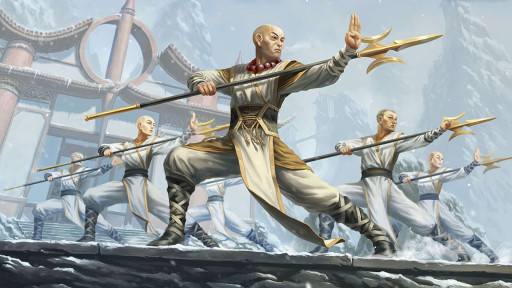
Move around combat like a blur, going so fast that no one will be able to even see you.
With a Kensei Monk build, along with a splash of Fighter and Cleric, you will be a mobile powerhouse in battle. No one will be able to catch you as you zoom around your enemies, launching arrows that are almost impossible to avoid.
By making this build, you get 3 longbow attacks per turn, as well as Action Surge and insane mobility. By choosing a longbow as one of your Kensei weapons, you can make 2 ranged attacks per turn using Ki-Fueled Strikes, an optional feature from Tasha’s. Another optional class feature, Focused-Aim, can grant up to +6 to hit as well as the +3 granted by Sharpen the Blade. This, paired with longbow proficiency and the archery fighting style from Fighter as well as Bless from your Cleric dip gives you an average bonus to hit of 22, with a +6 proficiency bonus and 20 dexterity.
Pair this with the Monk’s hit-and-run playstyle, and you have one of the most mobile and accurate archer builds available. This can be an incredibly rewarding playstyle, as it will have you running back and forth between enemies, firing arrows that are almost sure to hit their marks while being incredibly difficult to hit back thanks to Deflect Missiles.
Why is Kensei Monk / Fighter / Cleric so good?
- One of the highest attack modifiers possible
- 3 attacks per turn with a high damage-die weapon
- Really powerful mobility and decent defense
Build details:
To begin with, you’re going to want to take 3 levels of Monk and choose the Way of the Kensei subclass. This will give you your bow and two attacks, as well as many of your most important abilities for the early game. Next, take 1 level of Fighter for the archery fighting style and 1 level of Cleric (any subclass) to get the Bless spell. Take another level of fighter, and then pump the rest of your levels into Monk.
Be sure to take the optional class features Ki-Fuelled Attack and Focused Aim. They are essential to the build.
You need at least 13 Wisdom to multiclass into Cleric, but this build does not use it much other than that. For this reason, your ability score spread should look like this if you use Point Buy (be sure to use Tasha’s optional features to customize racial ability score increases):
STR: 8
DEX: 16
CON: 16
INT: 10
WIS: 14
CHA: 10
Monk (Kensei) 17 / Fighter 2 / Cleric 1
Monk (Kensei) Levels:
Level 1 (Monk 1) - Class Features: Unarmored Defense (AC = 10 + Dex mod + Wis mod when not wearing armor); Martial Arts (Gain certain benefits while fighting unarmed or using Monk weapons)
Level 2 (Monk 2) - Class Features: Ki (Gain Ki points which you can spend for a variety of benefits); Unarmored Movement (Speed increases by 10ft)
Level 3 (Monk 3) - Class Features: Monastic Tradition (Choose Way of the Kensei); Deflect Missiles (Reduce the damage of oncoming ranged attacks); Ki-Fuelled Attack (Spend Ki to make an extra attack as a bonus action). Way of the Kensei Features: Path of the Kensei (Gain additional Monk weapons and new ways to use them)
Level 7 (Monk 4) - Ability Score Improvement (Increase Dexterity by 2); Class Features: Slow Fall (Decrease fall damage by your Monk level times 5)
Level 8 (Monk 5) - Class Features: Extra Attack (Attack twice on your turn); Stunning Strike (Spend a Ki point to stun a creature when you hit them with an attack); Focused Aim (Spend up to 3 Ki points to increase your attack roll by 2 per Ki point when you miss an attack)
Level 9 (Monk 6) - Class Features: Ki-Empowered Strikes (Unarmed strikes are magical to overcome resistance and immunity). Way of the Kensei Features: One with the Blade (Kensei weapons become magical for the purpose of overcoming resistance and immunity, and you can deal extra damage with them using Ki points); Kensei Weapon (Gain an additional Kensei weapon)
Level 10 (Monk 7) - Class Features: Evasion (When an effect subjects you to a dexterity saving throw, you take no damage on a success or half damage on a failure); Stillness of Mind (Use your action to end the charmed or frightened conditions on yourself)
Level 11 (Monk 8) - Ability Score Improvement (Increase Dexterity by 2)
Level 12 (Monk 9) - Class Features: Unarmored Movement Improvement (Walk along vertical surfaces or water without falling)
Level 13 (Monk 10) - Class Features: Unarmored Movement (20ft); Purity of Body (Become immune to disease and poison)
Level 14 (Monk 11) - Way of the Kensei Features: Sharpen the Blade (spend up to 3 Ki points to gain a bonus to your attack rolls equal to the number of Ki points spent); Kensei Weapon
Level 15 (Monk 12) - Ability Score Improvement (Increase Constitution or Wisdom by 2)
Level 16 (Monk 13) - Class Features: Tongue of the Sun and Moon (Understand and speak all languages)
Level 17 (Monk 14) - Class Features: Unarmored Movement (25ft); Diamond Soul (Gain proficiency in all saving throws and spend Ki to reroll them)
Level 18 (Monk 15) - Class Features: Timeless Body (Stop aging)
Level 19 (Monk 16) - Ability Score Improvement (Increase Constitution or Wisdom by 2)
Level 20 (Monk 17) - Way of the Kensei Features: Unerring Accuracy (Once per turn, reroll a missed attack); Kensei Weapon
Fighter Levels:
Level 4 (Fighter 1) - Class Features: Second Wind (Heal a small amount of HP as a bonus action); Fighting Style (Choose archery)
Level 6 (Fighter 2) - Class Features: Action Surge (Once per long rest, gain an additional action on your turn)
Cleric Levels:
Level 5 (Cleric 1) - Class Features: Spellcasting; Divine Domain (Choose any)
3. Assassin Rogue / Gloom Stalker Ranger
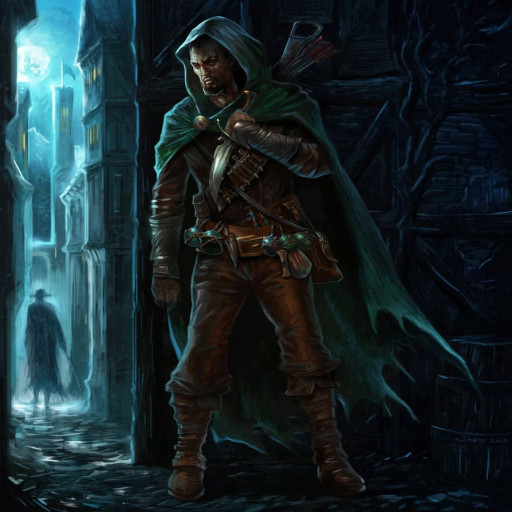
Strike from the shadows, acting as a stealthy hunter with deadly accuracy.
With this build, you will be the ultimate umbral hunter. Assassinate your foes with dreadful accuracy, and rain down arrows before they even have the chance to react.
This is one of the most powerful archer builds.Taking 5 levels in Ranger grants you Extra Attack, giving you twice as many opportunities to trigger Sneak Attack. The Gloom Stalker’s emphasis on the first turn of combat and granting benefits related to it pairs perfectly with the Assassin, allowing you to dish out absolutely insane single-target damage in a single turn, before your enemies can do anything in return.
Taking levels of Ranger also grants you access to some rudimentary magic, giving you more options in combat and some extra damage.
This build is perfect for anyone who wants to strike down their enemies from afar, often without ever being seen. It lends itself well to ranged weaponry, allowing you to stay safe and out of danger.
Why is Assassin Rogue / Gloomstalker Ranger so good?
- Some of the best single-target damage potential in the game
- Added versatility from the Ranger’s spells
- Low chance of dying, since you will likely be hidden in most combat encounters
Build details:
This build can go in two directions. The one I recommend and what I outline below is to take 5 levels of Ranger, 3 levels of Rogue, and then finish off with 12 more levels of Ranger. This will get you the Ranger’s excellent weapon and armor proficiencies, and speedrun you to getting Extra Attack before dipping into Rogue for Cunning Action, Sneak Attack, and Assassinate.
The other option is to take 5 levels of Ranger and then 15 levels of Rogue. This option will get you more Sneak Attack damage and some extra Expertise options. However, it sacrifices much of the Ranger’s spellcasting ability and durability. Additionally, many of the Assassin’s subclass features are pretty bad, with Assassinate being the only one really worth your while. No matter which option you choose, be sure to use Tasha’s optional class features to replace all of the abysmal class features the Ranger gets in their first 10 or so levels.
With this build, Wisdom and Dexterity are your most important ability scores. Be sure to use Tasha’s optional features to replace your racial ability score increases. If you use Point Buy, your ability score spread should look like this:
STR: 8
CON: 16
DEX: 16
INT: 8
WIS: 16
CHA: 8
Rogue (Assassin) 3 / Ranger (Gloom Stalker) 17
Rogue (Assassin) Levels:
Level 6 (Rogue 1) - Class Features: Expertise (Choose 2 skills to gain double proficiency. I recommend Stealth and Persuasion); Sneak Attack (1d6); Thieves’ Cant
Level 7 (Rogue 2) - Class Feature: Cunning Action (Dash, Disengage, or Hide as Bonus Action)
Level 8 (Rogue 3) - Class Features: Roguish Archetype (Choose Assassin); Sneak Attack (3d6). Assassin Features: Bonus Proficiencies (Gain proficiency with the Disguise Kit and Poisoner’s Kit); Assassinate (Gain advantage on creatures that have not taken their first turn in combat and automatic critical hits against surprised creatures)
Ranger (Gloom Stalker) Levels:
Level 1 (Ranger 1) - Class Features: Deft Explorer (Canny: Gain Expertise in one of your proficiencies and learn 2 more languages); Favored Foe (Mark a foe when you hit it with a weapon attack to deal an extra 1d4 damage against it for 1 minute)
Level 2 (Ranger 2) - Class Features: Spellcasting; Fighting Style (Choose Archery)
Level 3 (Ranger 3) - Class Features: Ranger Archetype (Choose Gloom Stalker); Primal Awareness (Gain extra spells at certain levels that you can cast once per long rest without using a spell slot). Gloom Stalker Features: Gloom Stalker Magic (Gain extra spells at certain levels); Dread Ambusher (Gain an extra 10 feet of movement and an extra attack that deals 1d8 extra damage on the first turn of combat); Umbral Sight (Gain Darkvision and become invisible when in darkness to any creature relying on Darkvision to see you)
Level 4 (Ranger 4) - Class Feature: Ability Score Improvement (Increase Dexterity by 2)
Level 5 (Ranger 5) - Class Feature: Extra Attack (Make 2 attacks on your turn)
Level 9 (Ranger 6) - Class Features: Deft Explorer (Rover: Your walking speed increases by 5 feet and you gain a swimming and climbing speed equal to your walking speed); Favored Foe (1d6)
Level 10 (Ranger 7) - Gloom Stalker Feature: Iron Mind (Gain proficiency in Wisdom Saving Throws)
Level 11 (Ranger 8) - Class Features: Ability Score Improvement (Increase Dexterity by 2); Land’s Stride (Move through difficult terrain without a movement penalty and gain advantage on saving throws against magical plants created to impede movement)
Level 12 (Ranger 9) - Nothing
Level 13 (Ranger 10) - Class Features: Deft Explorer (Tireless: Give yourself a number of temporary hit points equal to 1d8 + your Wisdom modifier and lose 1 exhaustion level after a short rest); Nature’s Veil (Magically become Invisible for 1 minute)
Level 14 (Ranger 11) - Gloom Stalker Feature: Stalker’s Flurry (When you miss with a weapon attack, you can make another as part of the same action)
Level 15 (Ranger 12) - Class Feature: Ability Score Improvement (Increase Wisdom or Constitution by 2)
Level 16 (Ranger 13) - Nothing
Level 17 (Ranger 14) - Class Features: Favored Foe (1d8); Vanish (Use the Hide action as a Bonus Action)
Level 18 (Ranger 15) - Gloom Stalker Feature: Shadowy Dodge (Use your reaction to impose disadvantage on an attack against you)
Level 19 (Ranger 16) - Class Feature: Ability Score Improvement (Increase Wisdom or Constitution (whichever you did not increase last time) by 2)
Level 20 (Ranger 17) - Nothing
2. Battlemaster Fighter
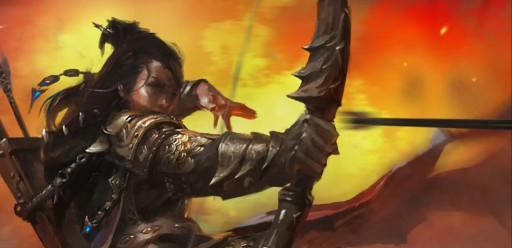
Wade into battle unopposed, firing arrows at your foes while they can do little to damage your large health pool.
With this character, you will be the quintessential archer. Fire arrows with deadly accuracy, creating an onslaught that no foe can withstand.
While generally being a pretty basic build, the Battlemaster Fighter is widely regarded as one of the best archer classes in D&D. The archery fighting style mixed with the Sharpshooter feat and Precision Attack make it almost as accurate as the Kensei Monk build we discussed. What sets this character apart, however, is its durability. While that build had low AC and even lower HP, the fighter gets a d10 hit die. This makes them especially tanky, which can be a force to be reckoned with when paired with their insane number of attacks per turn.
This build is ideal for players who want to have a presence on the battlefield, rather than skulking about in shadows and striking while unseen. It allows you to take hits but still dish them out just as well as other builds, setting it apart from the sneakier, more maneuverable characters we’ve been discussing
Why is Battlemaster Fighter so good?
- Fighter gets the highest base number of attacks in the game
- Battlemaster Fighter and Sharpshooter make this build incredibly accurate
- Tankier than other archers, thanks to the Fighter’s high HP
Build details:
This build is incredibly straightforward. Take the Variant Human race and Sharpshooter feat at level 1, and pump all of your levels into Fighter. Choose the Battlemaster subclass at level 3 and you’re golden.
For this build, the only scores that matter are Dexterity and Constitution. If you use Point Buy, your ability score spread should look like this:
STR: 8
CON: 16
DEX: 16
INT: 10
WIS: 13
CHA: 10
Battlemaster Fighter 20
Fighter (Battlemaster) Levels:
Level 1 (Fighter 1) - Class Features: Second Wind (Heal a small amount of HP as a bonus action); Fighting Style (Choose archery)
Level 2 (Fighter 2) - Class Features: Action Surge (Once per long rest, gain an additional action on your turn)
Level 3 (Fighter 3) - Class Features: Martial Archetype (Choose Battlemaster). Battlemaster Features: Combat Superiority (Learn Maneuvers you can use in combat using Superiority Dice); Student of War (Gain proficiency with one set of Artisan’s tools)
Level 4 (Fighter 4) - Ability Score Improvement (Increase Dexterity by 2)
Level 5 (Fighter 5) - Class Features: Extra Attack (Attack twice on your turn)
Level 6 (Fighter 6) - Ability Score Improvement (Increase Dexterity by 2)
Level 7 (Fighter 7) - Battlemaster Features: Know Your Enemy (Spend 1 minute observing a creature and learn certain information about its abilities)
Level 8 (Fighter 8) - Ability Score Improvement (Increase Constitution by 2)
Level 9 (Fighter 9) - Class Features: Indomitable (Reroll one saving throw per long rest)
Level 10 (Fighter 10) - Battlemaster Features: Superiority Dice (d10)
Level 11 (Fighter 11) - Extra Attack (Make 3 attacks on your turn)
Level 12 (Fighter 12) - Ability Score Improvement (Increase Constitution by 2 or choose a feat)
Level 13 (Fighter 13) - Class Features: Indomitable (two uses)
Level 14 (Fighter 14) - Ability Score Improvement (Increase Constitution by 2 or choose a feat)
Level 15 (Fighter 15) - Battlemaster Features: Relentless (Regain 1 Superiority Die when you roll Initiative and have none remaining)
Level 16 (Fighter 16) - Ability Score Improvement (Increase Constitution by 2 or choose a feat)
Level 17 (Fighter 17) - Action Surge (two uses); Indomitable (three uses)
Level 18 (Fighter 18) - Battlemaster Features: Superiority Dice (d12)
Level 19 (Fighter 19) - Ability Score Improvement (Increase Constitution by 2 or choose a feat)
Level 20 (Fighter 20) - Extra Attack (Make four attacks on your turn)
1. Battlemaster Fighter / Gloom Stalker Ranger

Ambush your prey before they can even react, striking them down with incredible accuracy.
Stalking from the shadows, eliminating foes with a single well-placed missile hides the Gloom Stalker Ranger / Battlemaster Fighter build. With this character, you will become the master of ambushes, capable of dealing insane amounts of damage in just a few, highly accurate shots.
Combining the Gloom Stalker’s raw damage output with the Battlemaster’s sheer accuracy gives you, undoubtedly, the strongest archer build in Dungeons & Dragons. With Precision Strike and the archery fighting style, it will be nearly impossible to miss your shots. Combine that with the Gloom Stalker’s extra damage output in the first round of combat gives you a character that can eliminate enemies before the round even starts.
Since the Ranger and Fighter both have d10 hit die, this build is just as capable of tanking attacks in the middle of a battle as any other Fighter. However, the Ranger’s skill proficiencies and expertise also make it incredibly adept at a more stealthy approach. This, combined with the Ranger’s spellcasting, makes this build very versatile and enjoyable to play.
Why is Gloom Stalker Ranger / Battlemaster Fighter so good?
- High damage output with multiple attacks and Action Surge
- Some versatility from the Ranger’s spellcasting
- High HP
- Amazing stealth capabilities
Build details:
To begin, take 3 levels of Ranger and the Gloom Stalker subclass. Then, take your 3 Fighter levels and the Battlemaster subclass. Finish off with 14 more levels of Ranger.
This build requires Dexterity, Wisdom, and Constitution to be effective. If you use Point Buy, your ability scores should look like this:
STR: 8
DEX: 16
CON: 16
INT: 10
WIS: 14
CHA: 10
Ranger (Gloom Stalker) 17 / Fighter (Battlemaster) 3
Ranger (Gloom Stalker) Levels:
Level 1 (Ranger 1) - Class Features: Deft Explorer (Canny: Gain Expertise in one of your proficiencies and learn 2 more languages); Favored Foe (Mark a foe when you hit it with a weapon attack to deal an extra 1d4 damage against it for 1 minute)
Level 2 (Ranger 2) - Class Features: Spellcasting; Fighting Style (Choose Archery)
Level 3 (Ranger 3) - Class Features: Ranger Archetype (Choose Gloom Stalker); Primal Awareness (Gain extra spells at certain levels that you can cast once per long rest without using a spell slot). Gloom Stalker Features: Gloom Stalker Magic (Gain extra spells at certain levels); Dread Ambusher (Gain an extra 10 feet of movement and an extra attack that deals 1d8 extra damage on the first turn of combat); Umbral Sight (Gain Darkvision and become invisible when in darkness to any creature relying on Darkvision to see you)
Level 7 (Ranger 4) - Class Feature: Ability Score Improvement (Increase Dexterity by 2)
Level 8 (Ranger 5) - Class Feature: Extra Attack (Make 2 attacks on your turn)
Level 9 (Ranger 6) - Class Features: Deft Explorer (Rover: Your walking speed increases by 5 feet and you gain a swimming and climbing speed equal to your walking speed); Favored Foe (1d6)
Level 10 (Ranger 7) - Gloom Stalker Feature: Iron Mind (Gain proficiency in Wisdom Saving Throws)
Level 11 (Ranger 8) - Class Features: Ability Score Improvement (Increase Dexterity by 2); Land’s Stride (Move through difficult terrain without a movement penalty and gain advantage on saving throws against magical plants created to impede movement)
Level 12 (Ranger 9) - Nothing
Level 13 (Ranger 10) - Class Features: Deft Explorer (Tireless: Give yourself a number of temporary hit points equal to 1d8 + your Wisdom modifier and lose 1 exhaustion level after a short rest); Nature’s Veil (Magically become Invisible for 1 minute)
Level 14 (Ranger 11) - Gloom Stalker Feature: Stalker’s Flurry (When you miss with a weapon attack, you can make another as part of the same action)
Level 15 (Ranger 12) - Class Feature: Ability Score Improvement (Increase Wisdom or Constitution by 2)
Level 16 (Ranger 13) - Nothing
Level 17 (Ranger 14) - Class Features: Favored Foe (1d8); Vanish (Use the Hide action as a Bonus Action)
Level 18 (Ranger 15) - Gloom Stalker Feature: Shadowy Dodge (Use your reaction to impose disadvantage on an attack against you)
Level 19 (Ranger 16) - Class Feature: Ability Score Improvement (Increase Wisdom or Constitution (whichever you did not increase last time) by 2)
Level 20 (Ranger 17) - Nothing
Fighter (Battlemaster) Levels:
Level 1 (Fighter 1) - Class Features: Second Wind (Heal a small amount of HP as a bonus action); Fighting Style (Choose archery)
Level 2 (Fighter 2) - Class Features: Action Surge (Once per long rest, gain an additional action on your turn)
Level 3 (Fighter 3) - Class Features: Martial Archetype (Choose Battlemaster). Battlemaster Features: Combat Superiority (Learn Maneuvers you can use in combat using Superiority Dice); Student of War (Gain proficiency with one set of Artisan’s tools)

